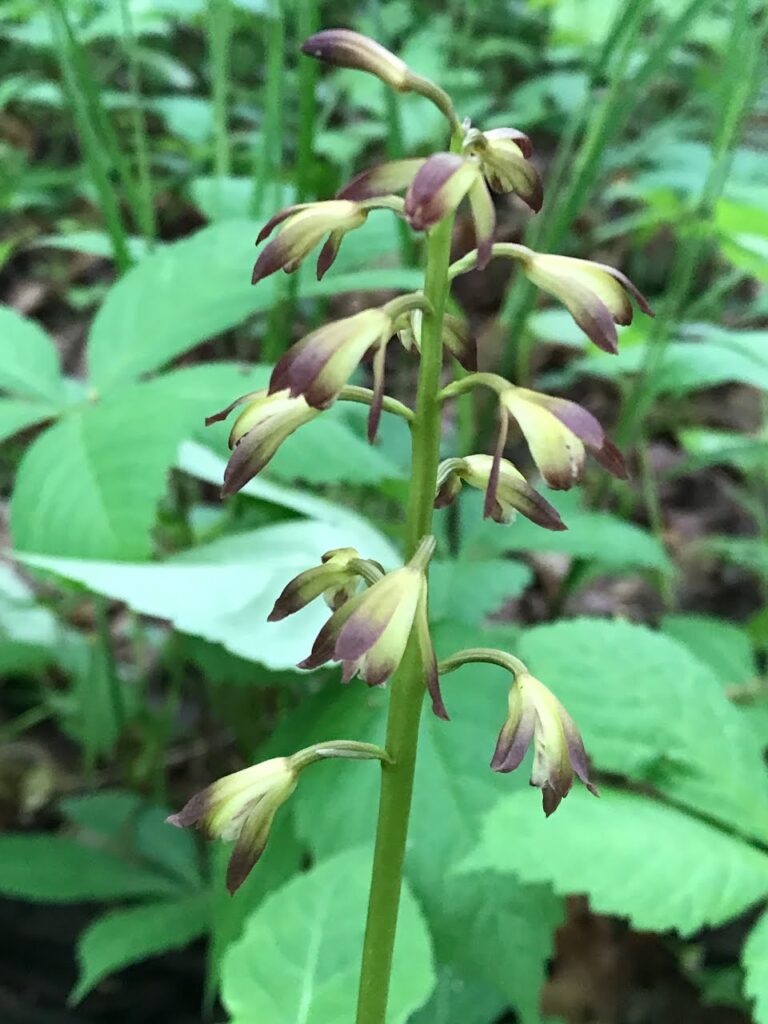When most people think of orchids, the first image that comes to mind may be those bright pink or purple flowers you see in a grocery store that tend to die as soon as you get them home…
The second image that comes to mind is probably a beautiful flower in a lush tropical rainforest full of dark greenery and brightly colored birds singing and calling. Well, what if I told you that we have orchids here in east central Indiana, too? Many folks probably don’t know that we have more orchids here than all of Hawaii! There are 42 orchid species native to Indiana, while Hawaii only has 3.
Among our most common orchids in east central Indiana are the nodding lady’s tresses (Spiranthes cernua). Nodding lady’s tresses are small, delicate white flowers you might not recognize as orchids at first glance. Upon closer inspection, you will recognize the characteristic orchid shape of the flowers with its lips and center column. The flower gets its genus name, Spiranthes, from the way its flowers spiral around each other in an upright spike. This orchid blooms from late summer to mid-fall and often grows in disturbed areas like forest edges, damp meadows, and wet thickets, making it relatively easy to find.
Another common orchid is putty root (Aplectrum hyemale). Putty root is a larger orchid with a flower stalk that can reach 1-2 feet and puts out anywhere from 8-20 flowers. The flowers are yellow at the base with purple-tinged tips, making for an almost camouflaged flower that can be easy to gloss over when out for a stroll. More common to find are the leaves of putty root, which are flat on the ground and 3-6 inches wide. The leaves have a pin-striped appearance, with white leaf veins that contrast against the otherwise dark green leaf. Putty root grows in rich forests and blooms in May for only about 2-3 weeks, so anyone looking to spot some this year better move quickly!
We, of course, can’t discuss Indiana’s native orchids without mentioning the cream of the crop: lady’s slipper orchids. Named for their unique shape that looks somewhat like a delicate shoe, stunners like the showy lady’s slipper (Cypripedium reginae) and the lesser yellow lady’s slipper (Cypripedium parviflorum) draw crowds from far and wide hoping to catch a glimpse of their beauty.
These orchids bloom from May to June, but finding one is not as simple as going out into the woods. Lady’s slipper orchids only grow in very acidic soil, which in Indiana is mostly found in bogs and fens. Most of these acidic wetlands are found in the northernmost counties of the state, but we have rare bogs and fens in east central Indiana as well.
These habitats were once much more common in our state, but Indiana has lost approximately 85% of its wetlands since pre-colonial times. Now lady’s slipper orchids are confined to the few scattered bogs and fens that are left. It is yet another reason why protecting our wetlands is so vital! Without preserving our remaining bogs and fens, east central Indiana, and indeed the whole state, could lose its lady’s slippers forever. To prevent future generations from marveling at their beauty would be a true crime indeed.
Indiana is home to many natural wonders, but even the most common orchid is truly wonderful to see. They can be hard to find, and even harder to find in bloom, but it is well worth the effort. And besides, even if you don’t end up finding an orchid, you’re likely to be left with a nice day spent in nature anyway. You don’t need to book an expedition into a tropical rainforest to find wild orchids. So, cancel that flight to Hawaii and hit the Hoosier countryside!
Pictured: Putty Root Orchid by Brad Hanauer
Natalie Grant is the Stewardship Technician for Red-tail Land Conservancy. Through her work in conservation and restoration, she is dedicated to counteracting negative human impacts on native ecosystems.




